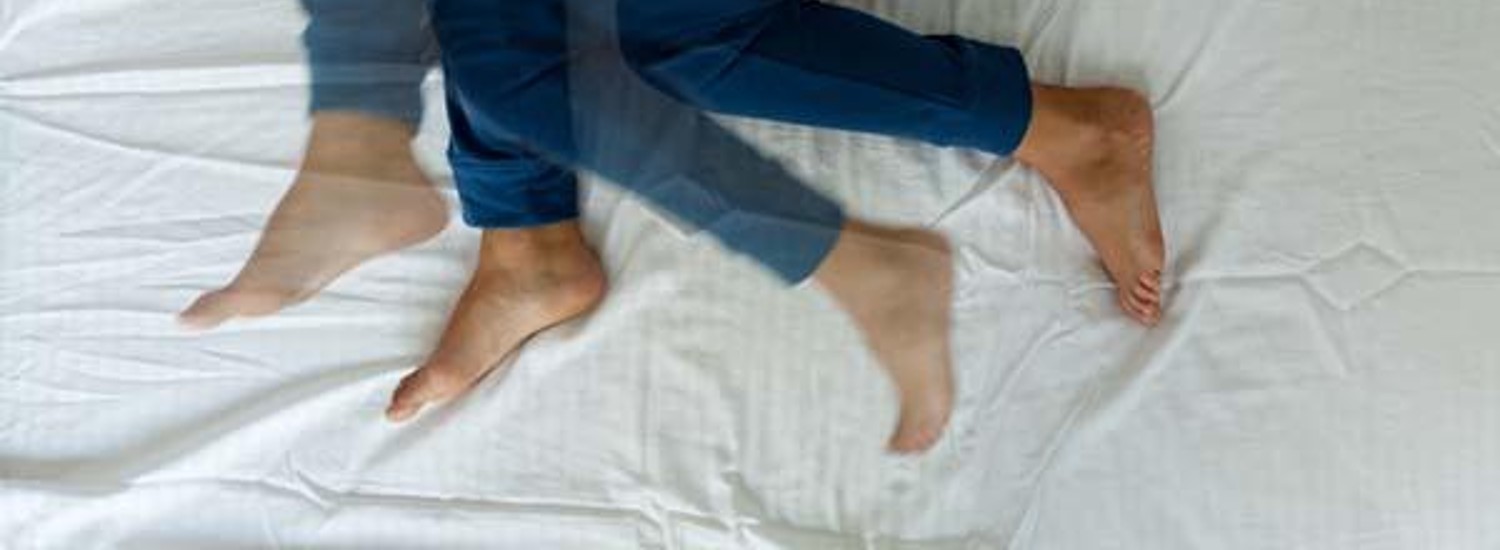Top rated

Restless legs syndrome: Self-care strategies for mild RLS
By Jenette Restivo, Health Writer; Assistant Director for Digital Content Creation and Engagement, Harvard Health Publishing
- Reviewed by Robert H. Shmerling, MD, Senior Faculty Editor, Harvard Health Publishing; Editorial Advisory Board Member, Harvard Health Publishing
Restless legs syndrome (RLS) is a common condition that causes irritating, twitchy sensations in the legs, especially when someone is trying to rest. RLS can affect quality of life and can disrupt sleep. But lifestyle strategies can help manage and reduce its impact, particularly if your symptoms are mild.
Understanding RLS
RLS is a neurological condition that causes an irresistible urge to move the legs due to uncomfortable sensations. RLS affects about 2% to 8% of the population.
According to the Restless Legs Syndrome Foundation, the following characteristics define RLS:
- a strong urge to move the legs, often due to uncomfortable sensations
- symptoms that worsen during rest or inactivity
- temporary relief from symptoms with movement
- symptoms that intensify in the evening or at night
- symptoms not explained by other conditions.
Symptoms of RLS
The uncomfortable sensations associated with RLS usually occur in the legs (and occasionally the arms). These sensations, often described as pulling, itching, crawling, or tingling, are usually felt deep within both legs. These sensations often lead to an irresistible need to move the affected limbs. While moving your legs can relieve the discomfort, the reprieve is temporary.
Symptoms are usually worst before falling asleep at night. But they can also occur during periods of inactivity during the day, such as during a long car ride or when watching a movie.
The severity and frequency of symptoms can vary from one person to another. Individuals with severe RLS may experience symptoms twice a week or more often. Moderate RLS may occur once or twice a week, while mild RLS occurs less frequently.
Lifestyle strategies for mild RLS
If your symptoms are mild, there are several lifestyle modifications you can try that may ease your RLS symptoms.
Diet
Iron deficiency can trigger RLS symptoms, so it is important to be checked for this condition. If you are iron deficient, your doctor may recommend tests to search for a cause (such as a bleeding stomach ulcer) and an iron supplement. Iron supplementation should only be done under medical supervision to avoid excess iron consumption.
It might also help to limit or avoid certain foods that can trigger symptoms. Caffeine, alcohol, and refined sugars have all been known to aggravate RLS.
Exercise and other lifestyle strategies
Various lifestyle changes may also bring relief for mild RLS.
Regular exercise, especially low- to moderate-intensity activities like walking or stretching, can help. Avoid vigorous exercise close to bedtime.
Relaxation techniques such as yoga, meditation, or warm baths before bed can promote better sleep and alleviate RLS symptoms. Leg massages, heating pads, or vibration pads can also help relieve the uncomfortable sensations in your legs.
Because RLS can cause sleep disturbances, it's important to practice sleep-promoting habits. That includes going to bed and waking up at the same time every day, dimming bright lights, and keeping your bedroom temperature slightly cool.
For some people, engaging in mentally stimulating activities such as crossword puzzles or knitting when sitting for extended periods can help to distract from discomfort.
If you have moderate or severe symptoms of restless leg syndrome, speak with your doctor about treatment options, which may include medications.
source: Harvard Medical School





 Login with Google
Login with Google